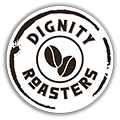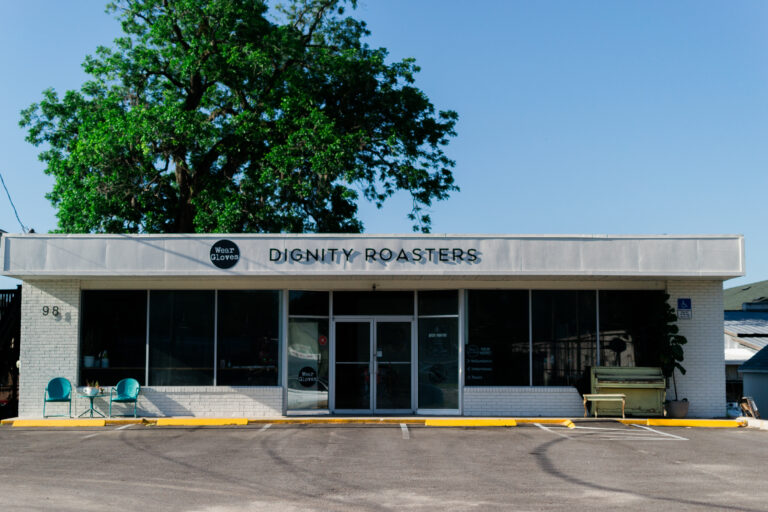
Who Knew Coffee Roasting Was So Complicated
By: Ashley Dease, August 5, 2025
On the evening of June 22, 2025, I grabbed my phone to set the alarm for the next morning. I had to do the math first: if my flight was at 7, I should be at the airport by 6, which means I should leave the house by 4, which means I should set my alarm for 3:15. Luckily, I was so excited for this flight that I didn’t mind the early wake-up. I was headed to Minneapolis, MN, to attend Roasting 101, a three-day-long workshop about how to roast specialty coffee. And now I am here to tell you everything I learned that week and how I’m applying it to Dignity Roasters coffee!
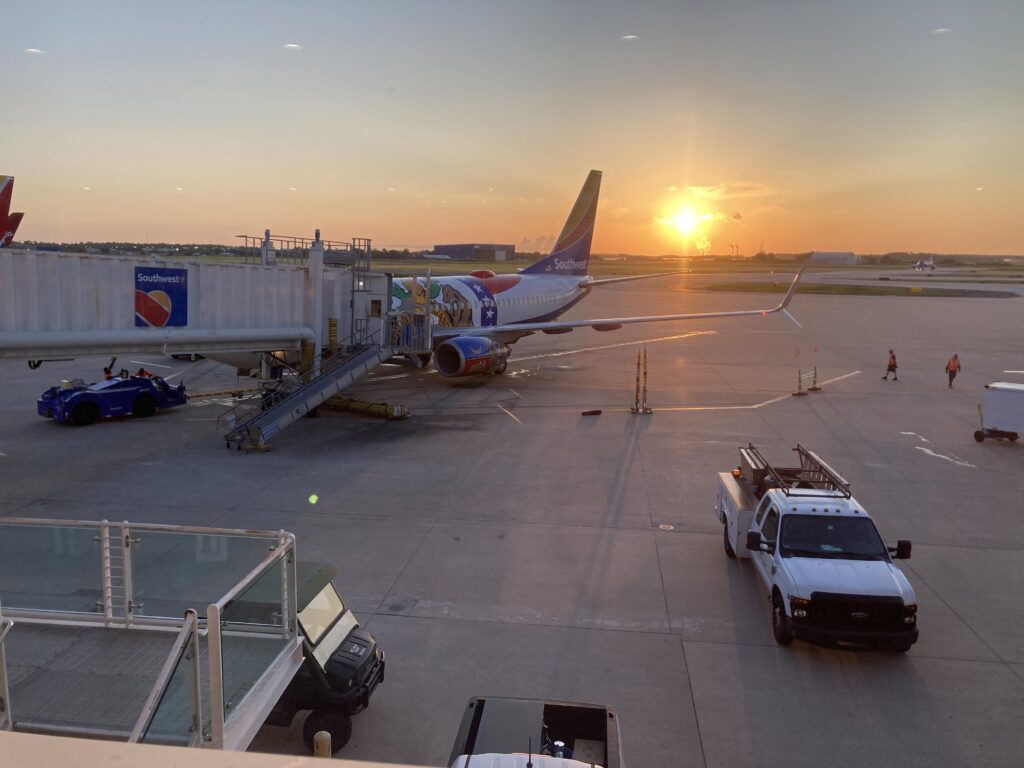
A sunrise flight for me. Photo credit: Ashley Dease
Day 1
When I arrived at Mill City Roasters, our training got started right away with cupping coffee. If you don’t know, a “coffee cupping” is where you have multiple types of brewed coffees on a table and you go from cup to cup, using a spoon to loudly slurp the coffee over your palate to taste the different notes in each cup. We had two mysterious coffees in front of us, our notepads in our hands, and 10 minutes to smell and taste the coffee to discern what notes we found in each. After our time was up, we found out it was the same coffee roasted two different ways:
- One was a “sample roast,” an intentionally underdeveloped coffee, roasted with the intent to find imperfections in the coffee. A sample roast is what roasters do to a new coffee when they are trying to decide whether to purchase it to roast and sell.
- The second was the same coffee, but it was roasted as they sell it. It was a delicious, medium roast Peruvian coffee with notes of cocoa.
After the cupping, we drove to Cafe Imports’ warehouse. They are a major importer of coffee from around the world and are also located in Minneapolis. Here we learned about sourcing green coffee beans and about how long the importing process takes. This was one of the most fascinating parts of my trip because I’ve never seen so much coffee in my life. The stacks of coffee had stacks of coffee on top of them. Stacks on stacks on stacks!
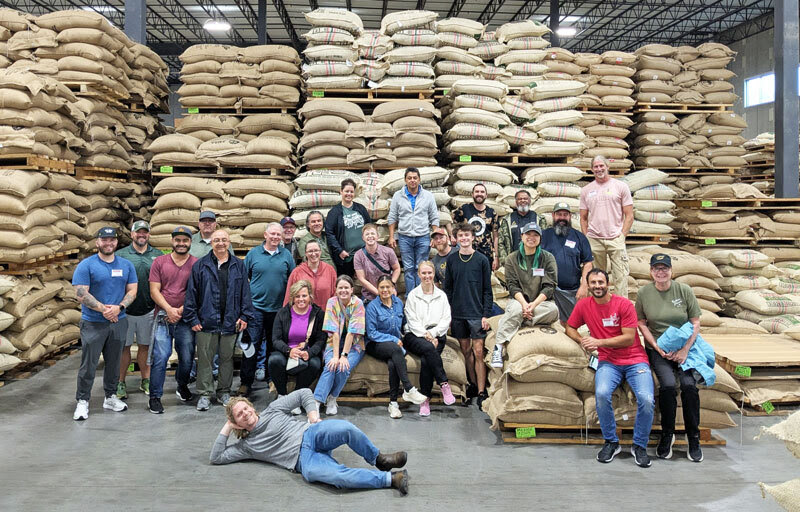
Our Roasting 101 class in Cafe Imports’ warehouse. Photo credit: Bryant Banker-Scannell
Day 2
When I arrived at Mill City Roasters the next morning, we began with a brief lecture and then immediately jumped into roasting. For our class of 25, we had five different roasters, so we were assigned 5 people to each roaster. We were given three recipes, one for a light roast coffee, one for a medium roast, and one for a dark roast. We were given a premeasured amount of green Peruvian coffee and told to follow the recipes. This roasting training was very much “hand-holding.” There were no questions as to what we should do or when we should do it during the roast. Essentially, it was impossible to screw up. After roasting, we transitioned over to cupping the coffees we just roasted.

My team in the middle of a roast. Photo credit: Ashley Dease
In the afternoon, we had another lecture and got back to roasting again. This time on a new roaster and with washed Ethiopian coffee beans. We were also not given the recipe, only a time and temperature goal, and two chances to roast it to those goals. If you have ever watched The Great British Baking Show, then you know what I mean when I say it felt like a “technical challenge.” Our group asked the last group for notes, we discussed how to approach the roast, and then we executed our plan. Our first roast was a little too fast, so we made our adjustments and got the second one right. The amount I learned from just this roasting session alone was incredible, and I had one more day to go!
Day 3
The last day started a bit differently; we were presented with five different pots of brewed coffee and a large dry-erase board with columns for each coffee. The whole group then silently tasted each coffee and wrote on the board any notes we tasted. We also placed check marks by notes we agreed with. At the end, it was revealed to us that those coffees were the Ethiopian beans we roasted the day before, and each pot was from a different group.
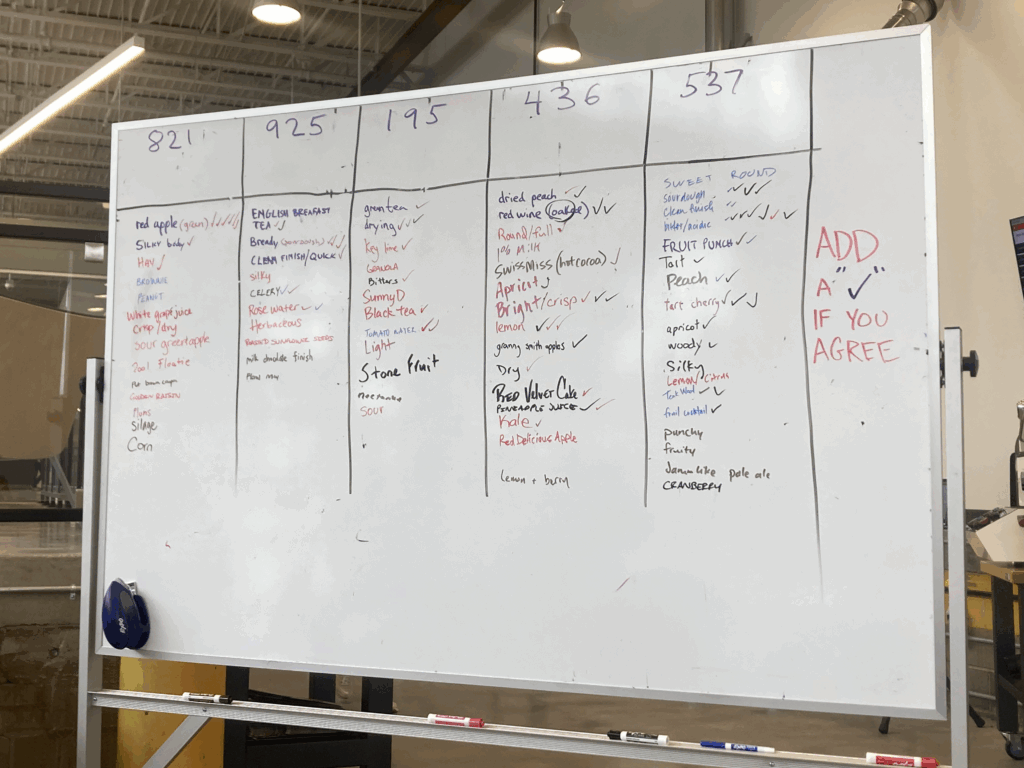
Our teacher labeled each column with a randomized number to avoid any biases. Photo credit: Ashley Dease
The rest of the day was structured similarly to the day before, with a lecture and a new roasting challenge on a new roaster in the morning. In this new roasting challenge, we were given a time goal and a color goal. We were handed a blend of green coffee beans to roast and roasted beans to match the color. After two tries, our team met the goals and won the challenge!
After lunch and another lecture, we roasted for one last time. This time, the final goals were a specific time, one of two temperatures to hit, and a percentage of development time. The development phase, the last stage of the roasting process, is the most critical, so we had an even narrower needle to thread this time. With the natural Ethiopian beans we were given, our first roast went wrong and was way too fast. We overshot the temperature goal by 15 degrees, so we had major adjustments to make. The second roast went perfectly and was exciting to nail. It felt like getting Star Baker in The Great British Baking Show. What a thrill!

Final Thoughts
The structure of the workshop was set in such a way that I felt extremely stretched, but never overwhelmed. At the beginning of the training, our hands were being held, and we were told what to do. By the end, we had a successful roast of a new coffee on a new roaster with not much information given. We experienced a rapid growth in knowledge that week and got to put it to the test, too. As I sit down and reflect on that time in rainy Minneapolis, I feel more grateful than anything else for the opportunity to learn this. I gained a new skill that week and leveled up for Dignity Roasters. Now I’m looking forward to applying everything I learned to our coffee offerings: a brownie-like Brazilian coffee and a tea-like Honduran coffee. Now let’s get roasting!
